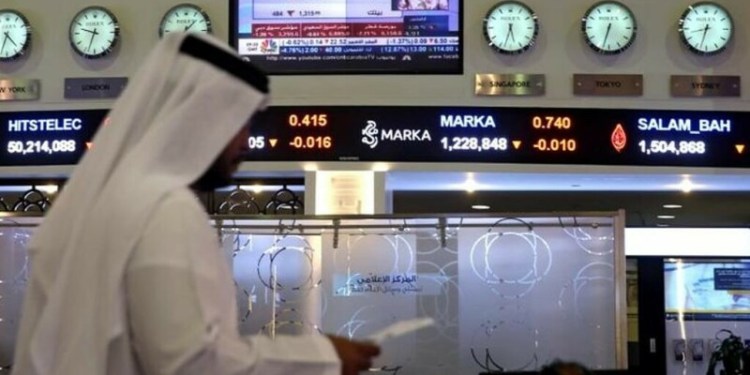By Wayne Cole
SYDNEY (Reuters) – Resource stocks were on a roll in Asia on Thursday as oil prices hit heights not seen since late 2014, though the potential boost to inflation globally also pressured fixed-income assets.
futures climbed another 34 cents in early trade to $73.82 a barrel, adding to a 2.7 percent jump overnight. gained 30 cents to $68.77.
The surge came on a Reuters report that OPEC’s new price hawk Saudi Arabia would be happy for crude to rise to $80 or even $100, a sign Riyadh will seek no changes to a supply-cutting deal even though the agreement’s original target is within sight.
“The Saudis and their colleagues in OPEC need higher oil for their fiscal positions and the Kingdom is on a bold – and costly – reform program,” said Greg McKenna, chief market strategist at CFD and FX provider AxiTrader.
“So, they might continue to squeeze the lemon while they have the chance and the hand.”
The leap in oil combined with fears that sanctions on Russia could hit supplies of other commodities to light a fire under the entire sector. Aluminum prices reached their highest since 2011, alumina touched an all-time peak and nickel jumped the most in 6-1/2 years.
Such increases, if sustained, could fuel inflationary pressures and investors hedged by selling sovereign bonds.
Yields on U.S. two-year Treasuries climbed to levels last visited in 2008 at 2.43 percent while 10-year yields jumped 6 basis points to 2.87 percent.
Resource stocks were the big winners driving Australia’s main index up 0.6 percent. Japan’s gained 0.4 percent, led by a 1.8 percent rise in basic material stocks.
MSCI’s broadest index of Asia-Pacific shares outside Japan added 0.15 percent, while E-Mini futures for the edged up 0.1 percent.
Wall Street had also seen hefty gains in the energy and industrial indexes, though that was offset by softness in sectors such as consumer staples and financials.
IBM’s 7.5 percent drop was the biggest drag on the S&P after the technology company’s quarterly profit margins missed Wall Street targets.
The ended down 0.16 percent, while the S&P 500 gained 0.08 percent and the Nasdaq 0.19 percent.
In currency markets, the U.S. dollar remained very much range bound with its index flat at 89.623. It was a fraction firmer on the yen at 107.33 yen, but still short of recent peaks at 107.78.
The euro hovered at $1.2379, after easing from the week’s top of $1.2413.
The Canadian dollar hit a one-week low after the Bank of Canada sounded more dovish than expected, saying it did not know when or how aggressive it would need to be on tightening in order to keep inflation in check.
Sterling was softer at $1.4205 after a surprisingly tame reading on inflation led the market to reconsider the likely pace of future rate rises from the Bank of England.
Data out on New Zealand on Thursday showed annual inflation there had slowed to just 1.1 percent in the first quarter, underlining expectations that interest rates would remain at record lows for many more months to come.
Fusion Media or anyone involved with Fusion Media will not accept any liability for loss or damage as a result of reliance on the information including data, quotes, charts and buy/sell signals contained within this website. Please be fully informed regarding the risks and costs associated with trading the financial markets, it is one of the riskiest investment forms possible.
Source: Investing.com



























